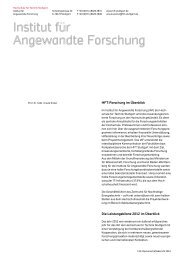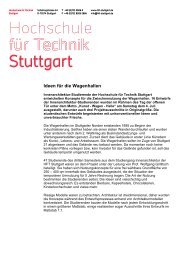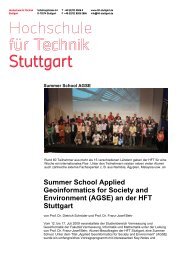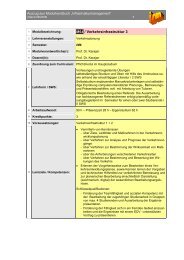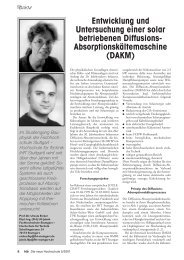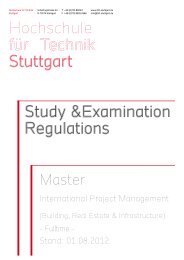greenland climate network (gc-net) - HFT Stuttgart
greenland climate network (gc-net) - HFT Stuttgart
greenland climate network (gc-net) - HFT Stuttgart
You also want an ePaper? Increase the reach of your titles
YUMPU automatically turns print PDFs into web optimized ePapers that Google loves.
NASA Greenland Progress Report 27<br />
From repeated measurements 6 days later we derived an approximation for ice flow direction<br />
and velocity Tables 3.4.2 and 3.4.3). The flow velocity of 0,26 m/d is less than at Swiss Camp<br />
(0,32 m/d), situated in higher altitude. This is surprising, because increased velocity could be expected<br />
now in summer time due to more melt water on the ground and faster basic sliding.<br />
Also surprising is the big value of elevation decrease with -0,046 m/d (Table 3.4.4). This results<br />
from the two determination methods; absolute GPS heights and ablation measurement at<br />
stakes. Hence, the surface has lowered by melting and not by dynamic thinning (flowing out).<br />
Considering that in July and August about 80 % of all-year melting occurs, the resulting yearly<br />
melting rate is 3,5 – 4,0 m/a. As our stakes are anchored 4,0 – 4,5 m deep in ice, which means our<br />
stake <strong><strong>net</strong>work</strong> will only survive one season.<br />
period 11.08.-17.08.2004<br />
Average of flow velocity [m/d] 0,258<br />
Standard deviation of one value 0,012<br />
Standard deviation of average 0,006<br />
Table 3.4.2 : Flow velocity at <strong><strong>net</strong>work</strong> ST2<br />
period 11.08-17.08<br />
stake Azimuth [gon]<br />
ST 200 265,9398<br />
ST 201 260,4176<br />
ST 202 267,5828<br />
ST 203 269,5646<br />
Average: 265,8762<br />
Standard dev. 1 point: 3,93<br />
Standard dev. average: 1,96<br />
Table 3.4. 3 : Flow direction at <strong><strong>net</strong>work</strong> ST2<br />
3.4.3 Summary<br />
Elevation<br />
change ice<br />
Elevation<br />
change per day<br />
Stake after 6 days [m/d]<br />
[m]<br />
ST 200 -0,266<br />
ST 201 -0,260<br />
ST 202 -0,333<br />
ST 203 -0,232<br />
average: -0,273 - 0,046<br />
Std.dev. 1 value: 0,043<br />
Std.dev. average: 0,021<br />
Table3.4. 4 : Elevation decrease at ST2 after 6 days<br />
We find accelerated melting rates and differing strain rates at Swiss-Camp between 2002 and<br />
2004, compared to the long-term trend. These results confirm trends from other parts in<br />
Greenland with increased thinning in the ablation areas near the ice margin. The equilibrium line<br />
originally was situated in altitude of Swiss-Camp, but now is shifted to higher areas, caused by<br />
<strong>climate</strong> change, especially in North Polar Regions.<br />
The two test areas “Swiss-Camp” and “ST2” are precisely measured <strong><strong>net</strong>work</strong>s with well<br />
known topography and digital elevation models. Although principally intended for investigation<br />
of elevation change and ice flow parameters, they can be also used for validation of remote sensing<br />
methods, such as laser altimetry or microwave RADAR techniques (ICESat, CryoSat and<br />
others).







